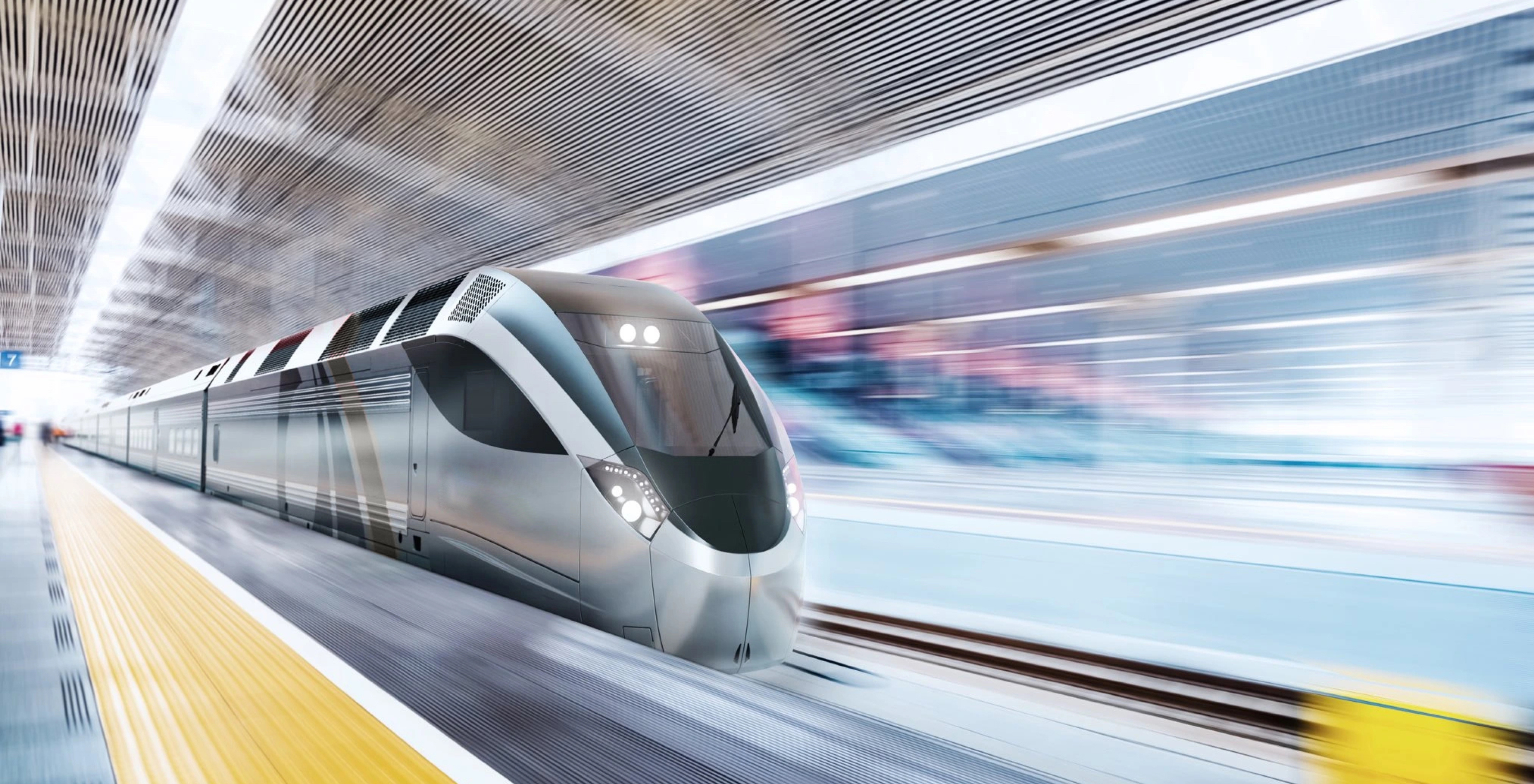Rail projects around the world - Asia Pacific
Rail transportation has been a cornerstone of infrastructure development in the Asia Pacific region, connecting vast territories and fueling economic growth for decades. As one of the world's most populous and diverse regions, the Asia Pacific is home to a plethora of rail projects, ranging from high-speed rail networks to urban metro systems, that are driving innovation and transforming transportation. These projects are expected to enhance mobility, reduce congestion, and provide sustainable transportation options for millions of people across the region.
With exciting projects such as the Singapore-Kuala Lumpur High-Speed Rail and the Jakarta-Bandung High-Speed Railway underway, the future of rail in the Asia Pacific looks brighter than ever, and these projects are set to have a transformative impact on the region's transportation landscape.
Here are some of the most impressive rail projects taking place in Asia Pacific.
What the Latest Rail Projects in the Asia Pacific Have in Store for the Region and Beyond
With several ambitious rail projects under way, the Asia Pacific region is experiencing an exciting era of rail transportation. One of the latest trends in rail technology in the region is the development of high-speed rail networks. These networks connect cities and countries, providing a fast and efficient mode of transportation for commuters and travellers alike.
Another significant development in rail technology is the focus on sustainability. Many new rail projects in the Asia Pacific region are designed to be eco-friendly, with the use of renewable energy sources such as solar and wind power. This not only helps to reduce the carbon footprint of rail travel but also ensures the long-term viability of the rail network.
In addition, the Asia Pacific region is also witnessing the integration of modern ticketing technology. Open-loop digital rail ticketing systems, with contactless payment methods and automated fare collection (AFC) systems, are being adopted in several rail projects across the region. This technology simplifies the ticketing process and reduces wait times, providing a more seamless user experience for passengers. There is also the emergence of light rail automation to enhance safety, increase efficiency, and reduce accidents. With these exciting developments in rail automation, the Asia Pacific region is poised for a transformative impact on its transportation landscape.
Top Rail Projects in the Asia Pacific
As the Asia Pacific region continues to rapidly develop and expand, rail projects have emerged as a key solution to meet the growing demand for transportation. From bustling metropolises to remote regions, rail infrastructure has helped connect people and places, facilitating trade and commerce, and unlocking new opportunities for economic growth.
Read on for a closer look at some of the most exciting rail projects currently underway in the Asia Pacific region.
China's High-Speed Rail Network
China's high-speed rail network is the largest in the world and spans over 22,000 miles of track. The network serves as a critical transportation link, connecting major cities across the country.
Featuring cutting-edge technology, including trains that travel at speeds up to 217 mph, and advanced safety measures such as earthquake detection and automatic train control systems, the network also includes a number of impressive engineering feats, such as the longest sea-crossing bridge and the world's highest railway bridge.
Another of the most ambitious projects on the high-speed rail network is the Beijing-Shanghai High-Speed Railway, which is approximately 820 miles long and can cover the distance between the two cities in just 4.5 hours.
The high-speed rail network has also helped to reduce traffic congestion, air pollution and carbon emissions, as more people choose to travel by train instead of by car or plane. China's ambitious plans for its high-speed rail network include extending the network to more remote regions, increasing the speed of trains to over 300 mph, and expanding its international connections to countries such as Thailand, Laos, and Russia. The network is expected to play an important role in China's continued economic development and connectivity with the rest of the world.
India's Mumbai-Ahmedabad High-Speed Rail Project
India's first high-speed rail project is currently underway, connecting Mumbai and Ahmedabad with a 508 km long corridor. The Mumbai-Ahmedabad High-Speed Rail Project is expected to be completed by 2028 and will revolutionise transportation in the region.
With speeds reaching up to 217 mph, the high-speed rail project is expected to significantly reduce travel times and provide a comfortable, reliable, and safe mode of transportation for millions of people living in Mumbai and Ahmedabad.
The Mumbai-Ahmedabad High-Speed Rail Project, also known as the Bullet Train Project, is a joint venture between the Indian and Japanese governments. It will feature advanced technology, including Japanese Shinkansen technology, which will enable trains to travel at a speed of 320 km/h reducing travel time between the two cities from 7 hours to just 2 hours. The project is also expected to create thousands of jobs during the construction phase and generate significant economic benefits in the long term. Despite some initial challenges, such as land acquisition and environmental concerns, the project has made significant progress, and it is expected to be completed on time. The Mumbai-Ahmedabad High-Speed Rail Project is a significant milestone in India's development of transportation and a symbol of the country's ambition to become a modern and prosperous nation.
Malaysia's East Coast Rail Link
Malaysia's East Coast Rail Link is an ambitious railway project that will span 665 km with 50 km of it being elevated. The project is expected to be completed in 2026 and will serve as a critical transportation link between the east coast of Peninsular Malaysia to the west coast. The project is one of Malaysia's largest infrastructure projects and is intended to spur economic growth and development in the country's eastern region.
It will also feature 26 stations, with seven of them being interchange stations. The railway line will pass through several cities and towns, including Kuantan, Kuala Terengganu, and Kota Bharu. The railway line will have a double-track system that will allow trains to run at a maximum speed of 160 km/h.
The project is also expected to create new job opportunities and promote tourism in the region by providing better connectivity to popular tourist destinations such as Cherating and the Perhentian Islands. Despite some initial setbacks, the project has made significant progress, and construction is currently underway. Malaysia's government has expressed its commitment to the project, citing its potential to bring significant benefits to the country's economy and transportation infrastructure. The East Coast Rail Link represents a significant investment in Malaysia's future and is expected to have a lasting impact on the country's development.
Thailand's Bangkok-Nong Khai High-Speed Rail Project
Thailand's high-speed rail project is set to transform the country's transportation system. The project will connect Bangkok with Nong Khai on the Laos border, covering a distance of approximately 600 km. The project is expected to be completed by 2029 and will involve the construction of 12 stations along the route. The rail network will have a top speed of 250 km/hr and is expected to reduce travel time between Bangkok and Nong Khai from 12 hours to just 3 hours. The project will also improve connectivity and trade between Thailand and its neighbouring countries, as the railway network will be linked to other ASEAN countries, such as China and Malaysia.
The project will be elevated in urban areas and will also pass through tunnels and bridges to minimise the impact on the environment. The Thai government has plans to extend the network to other countries in the region, including China, Cambodia, and Laos. The extension of the rail network will further improve regional connectivity and facilitate cross-border trade and investment.
Indonesia's Jakarta-Bandung High-Speed Rail Project
Indonesia's first high-speed rail project is an ambitious initiative that aims to connect the capital city of Jakarta with the city of Bandung. Once completed, the Jakarta-Bandung High-Speed Rail Project will span a distance of approximately 142 km. The rail line will have a maximum speed of 250 km/h, reducing the travel time from three hours to just 40 minutes.
The project is being developed as a joint venture between the governments of Indonesia and China, with Chinese companies handling the majority of the construction work. The Jakarta-Bandung High-Speed Rail Project is set to commence operations by June 2023.
The Jakarta-Bandung High-Speed Rail Project represents a significant investment in Indonesia's Infrastructure for transportation and is expected to bring significant benefits to the country's economy and people. The project is also expected to boost tourism and improve the quality of life for people living in the region. With its advanced technology and innovative design, the Jakarta-Bandung High-Speed Rail Project is poised to become a model for future transportation projects in Indonesia and beyond.
Australia’s Sydney Metro
The Sydney Metro Project is Australia's largest public transport initiative to date, designed to provide a fast, efficient, and reliable mode of transportation for the city's residents and visitors. The project includes the construction of two new metro lines; Metro Northwest and the Metro City & Southwest, with a total of 31 metro stations and over 66 km of new metro rail, connecting the city's northwest suburbs to the central business district and beyond.
The Sydney Metro will offer a range of features to improve the travel experience for passengers, improving connectivity, reducing travel times, and enhancing the overall quality of life for Sydneysiders. The trains will be driverless, and the stations will be equipped with platform screen doors to improve safety and reduce noise. The trains will run every four minutes during peak hours, and the entire network will be fully accessible, with level access between the train and the platform. The project is expected to be completed in 2024.
Future plans include the construction of additional lines to connect more suburbs to the network, and the extension of the existing lines to reach new destinations.
Japan’s Hokkaido Shinkansen
The Hokkaido Shinkansen is a high-speed railway line in Japan that connects the city of Aomori on the main island of Honshu with the city of Hakodate on the island of Hokkaido. The project was completed in 2016. The line is approximately 148 km long and has four stations: Shin-Aomori, Oku Tsugaru-Imabetsu, Kikonai, and Shin-Hakodate-Hokuto.
The project was significant in that it marked the first time that a shinkansen, or bullet train, was operated in Hokkaido, and it had a major impact on travel and tourism in the region. The journey between Shin-Aomori and Shin-Hakodate-Hokuto takes around 4 hours, which is significantly shorter than the previous travel time of around 7 hours as it was only possible by ferry or air, which could be costly and time-consuming. The train can reach a maximum speed of 320 km/h, making it one of the fastest railways in the country.
There are plans to extend the Hokkaido Shinkansen further north to the city of Sapporo, the largest city on the island of Hokkaido. This extension is expected to be completed by 2031 and will further enhance the connectivity of the region.
With numerous ambitious rail projects in the works, Asia Pacific is bringing rail transportation to an exciting new level. As a result of these projects, millions of people will be able to choose from sustainable transportation options and enhance their quality of life.
Some of the latest trends in rail technology include high-speed rail networks, sustainable design, and modern ticketing technology. The increased capacity of these systems will also reduce congestion in their relative regions, improving air quality and reducing greenhouse gas emissions. The projects will also help to revitalise urban areas and create new opportunities that will contribute to economic growth and global connectivity for the region.



